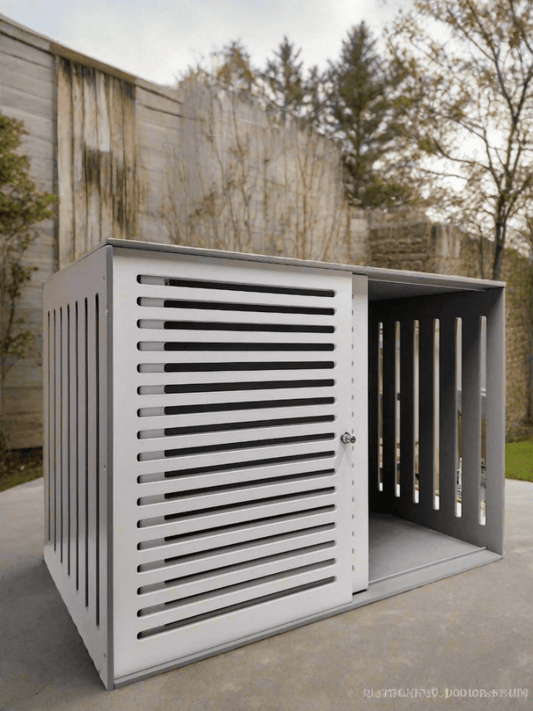Cavalier King Charles crate
The Cavalier King Charles Spaniel, often shortened to Cavalier, is a beloved breed known for its gentle nature, playful spirit, and luxurious coat. These charming companions bring joy to countless households, but ensuring their comfort and safety is a top priority. Discover the ideal dog crates for Cavalier, assisting you in locating the perfect "den" for your furry friend.
Our Bestsellers
-
Turquoise Wood Dog House - Secure and Cozy Shelter for your Pet
Regular price From $435.78 USDRegular priceUnit price per$484.20 USDSale price From $435.78 USDSale -
Contemporary Grey and White Dog Kennel - Stylish and Secure Home for Furry Friends
Regular price From $337.69 USDRegular priceUnit price per$339.85 USDSale price From $337.69 USDSale -
Two-in-One Durable Crate: Beige and Comfortable Housing for Dual Dogs
Regular price From $724.30 USDRegular priceUnit price per$0.00 USDSale price From $724.30 USD -
Vibrant and Comfortable Dog Safe House - Modern Brown Cage with Sliding Door
Regular price From $337.69 USDRegular priceUnit price per$339.85 USDSale price From $337.69 USDSale
Understanding the Cavalier King Charles
Cavalier King Charles Spaniels, not to be confused with their slightly larger cousins, the King Charles Spaniel, are classified as a toy dog breed. These affectionate and adaptable dogs typically stand between 12-14 inches tall at the shoulder and weigh around 13-18 pounds. Their gentle temperament makes them wonderful companions for families with children and other pets.
Crate Size for Cavaliers
Choosing the appropriate dog cage size is crucial for your Cavalier's well-being. A properly sized crate allows them to stand comfortably, turn around freely, and lie down in a relaxed position. Here's a good rule of thumb for Cavalier King Charles Spaniels:
- Recommended size: 24-30 inches in length
- Material and Durability
Cavalier, while typically gentle, can be surprisingly energetic. Therefore, the cage material should be sturdy and durable to withstand playful behavior. Wooden crate for your pet can complement your home decor.
- Safety and Security
Look for a crate with smooth edges and a secure locking mechanism to prevent escapes and injuries. Ensure the door opens and closes easily for convenient access.
- Comfort and Accessories
Transform your Cavalier's kennel into a haven of comfort by adding a soft bed or mat inside. Familiar toys and chew bones can keep them entertained while crated. Placing the king charles cavalier kennel in a quiet, familiar area of your home will create a calming environment for your dog.
- Training and Enrichment
While crates offer a safe and secure space for your Cavalier, they should not be used for extended periods. Provide your dog with plenty of exercise, playtime, and positive reinforcement training outside the cage.
Our promise
Secure and flexible payment with Stripe
Our site offers secure payments through Stripe, allowing you to use various payment methods with full data protection.
Timely delivery times
We partner with FedEx and UPS for shipping, and delivery takes 4 to 8 business days from the time of order, depending on your country and product. For precise delivery times, please contact us in the chat.
Free shipping
We provide free worldwide shipping. Please note that customs fees may apply, depending on the regulations in your country, and are paid by the recipient.





